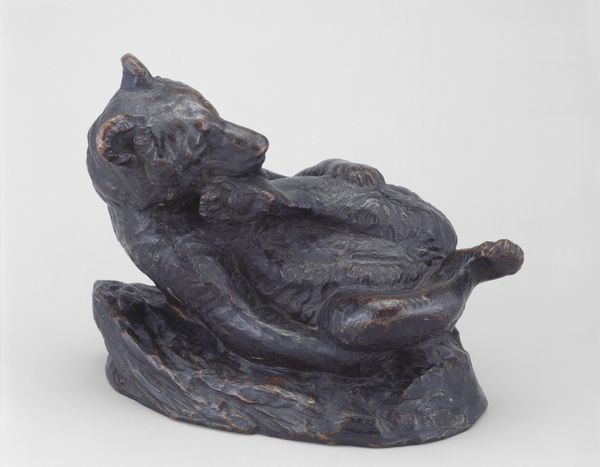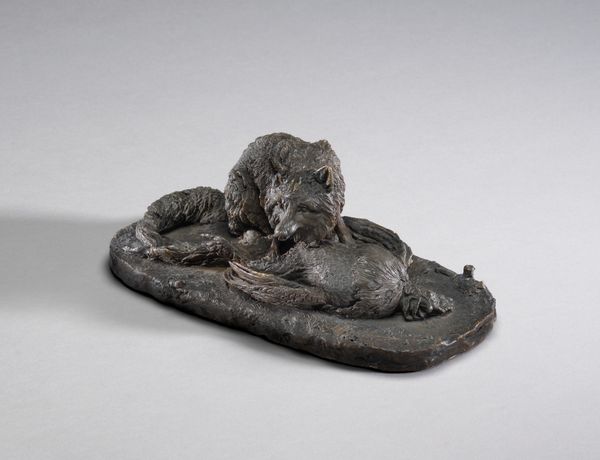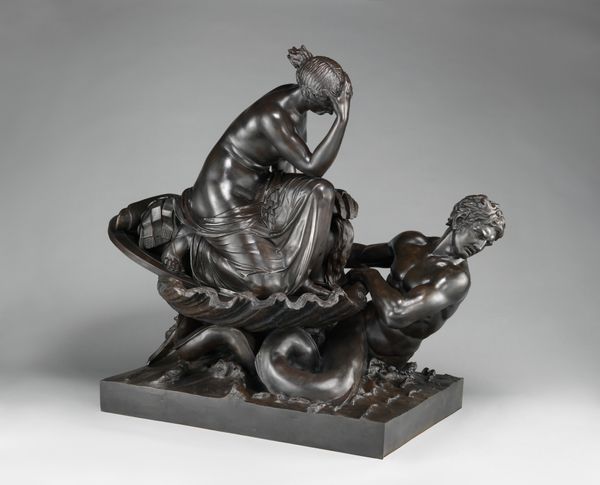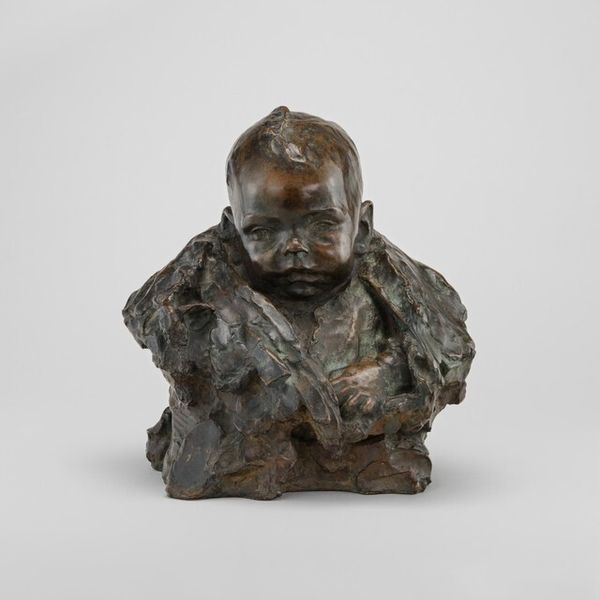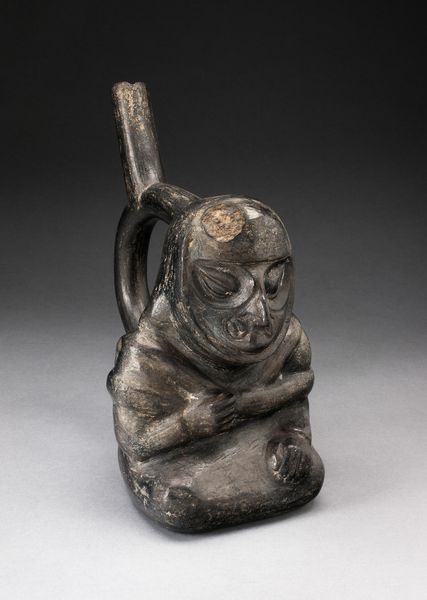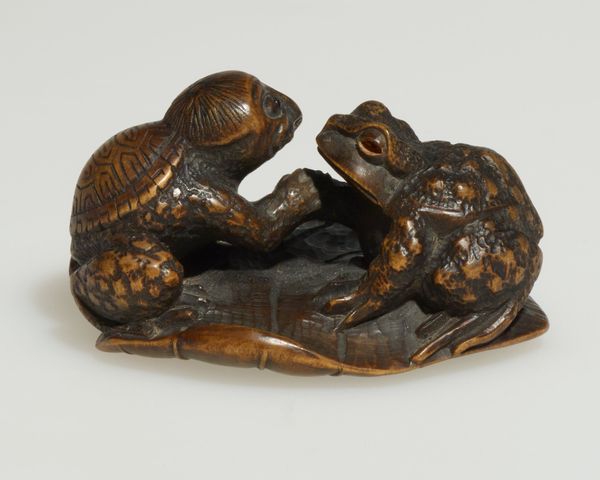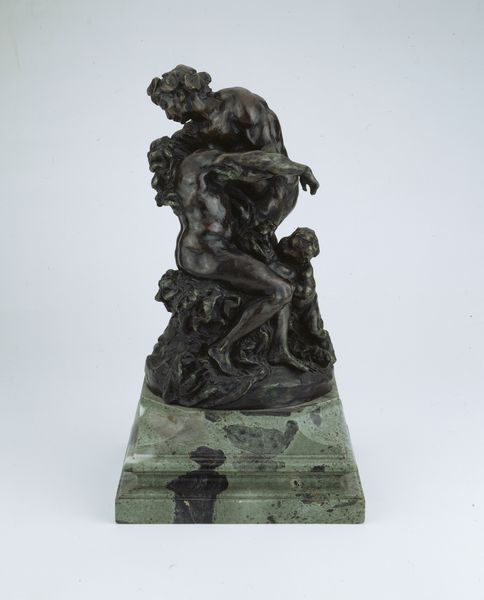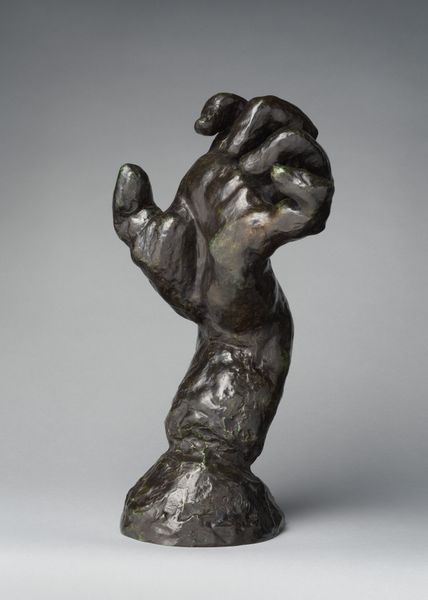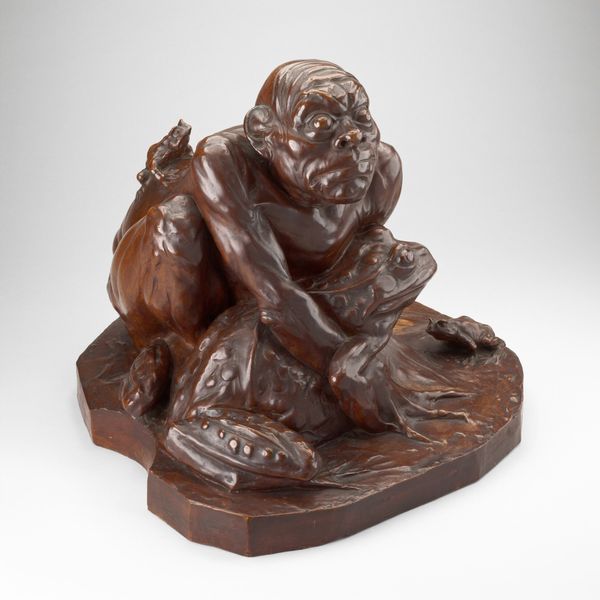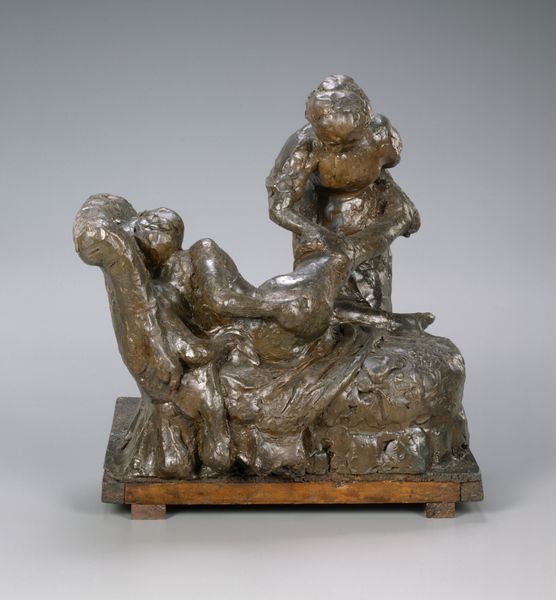
Dimensions: 54.6 × 67.3 × 59.7 cm (21 1/2 × 26 1/2 × 23 1/2 in.)
Copyright: Public Domain
Curator: This bronze sculpture before us, entitled "Dying Centaur", was created circa 19th century by the American artist William Rimmer. The piece is currently housed here at The Art Institute of Chicago. Editor: What strikes me immediately is the palpable sense of struggle. It's not just about death, it's about resistance, even in the face of inevitable decline. The contorted body and upward reaching arm speak volumes. Curator: Rimmer was profoundly influenced by classical antiquity, and the centaur, a creature of both man and beast, symbolizes the inherent duality of human nature, its potential for both reason and primal instinct. The very choice of this subject links him to longstanding intellectual and aesthetic traditions. Editor: Absolutely. And this particular centaur's demise is deeply moving. Think about it, the hybrid identity, neither fully human nor animal—this speaks to a more universal experience of being caught between worlds, between societal expectations and personal desires. A potent metaphor for the outsider. Curator: Considering Rimmer's own life, fraught with personal and professional struggles, one can read this centaur as an allegory for his own battles. He strived for recognition but faced constant obstacles, and so, his interpretation gives way to social implications and interpretations of struggle. Editor: Exactly, let's consider its impact, not just artistic intent. How does the work prompt questions of who gets to create, who is seen, who struggles? It is critical for understanding who gets excluded by those "intellectual traditions". Rimmer offers us not only the romantic ideal of heroism but, as well, a deeper, darker space to question ideas about the relationship of art and artist, art and viewer, and more broadly, societal constraints and values. Curator: A valuable reminder to contextualize even the most classical of subjects. This examination truly enhances our appreciation of Rimmer's compelling bronze. Editor: Indeed. A visceral image, which asks not just “What is art?” but "For whom and why?"
Comments
No comments
Be the first to comment and join the conversation on the ultimate creative platform.
